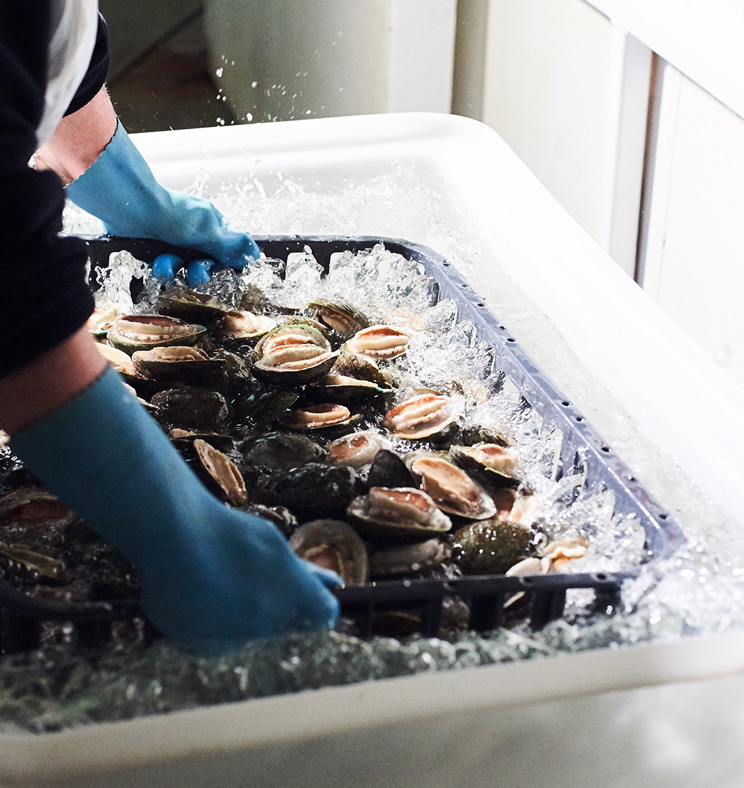Every part of Yumbah's farming operations is in step with the natural cycle of the ocean.
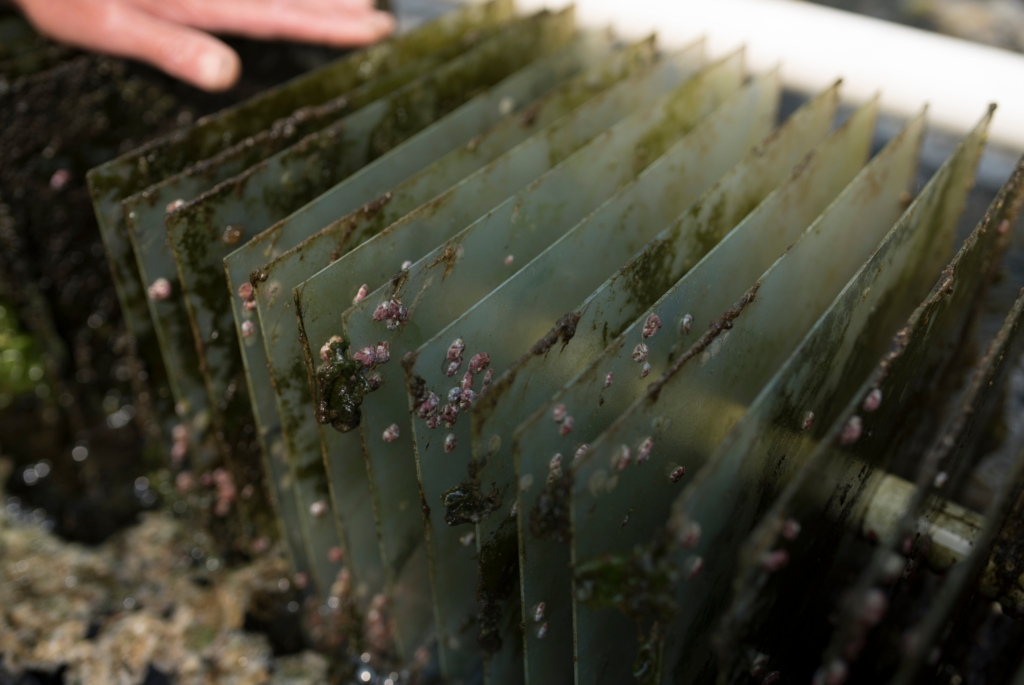
Life in the Beginning
Life for Yumbah’s abalone begins in one of four purpose-built hatcheries. Our biologists select prime broodstock that are encouraged to spawn naturally. Eggs fertilised by sperm hatch twenty-four hours later, producing beautiful free-swimming larval abalone called trochophore larvae.
After a week-long larval cycle, the strongest are transferred to the nursery, settling and feeding in a garden of cultured algae.
Early Stages
In the nursery the trochophore larvae undergo metamorphosis and transform into microscopic abalone, complete with a translucent shell and foot. In the following six months the abalone increase in size by 100 times from 0.2mm to 20mm in diameter. They are then ready to be weaned onto our specialised diet and transferred to the grow-out system.
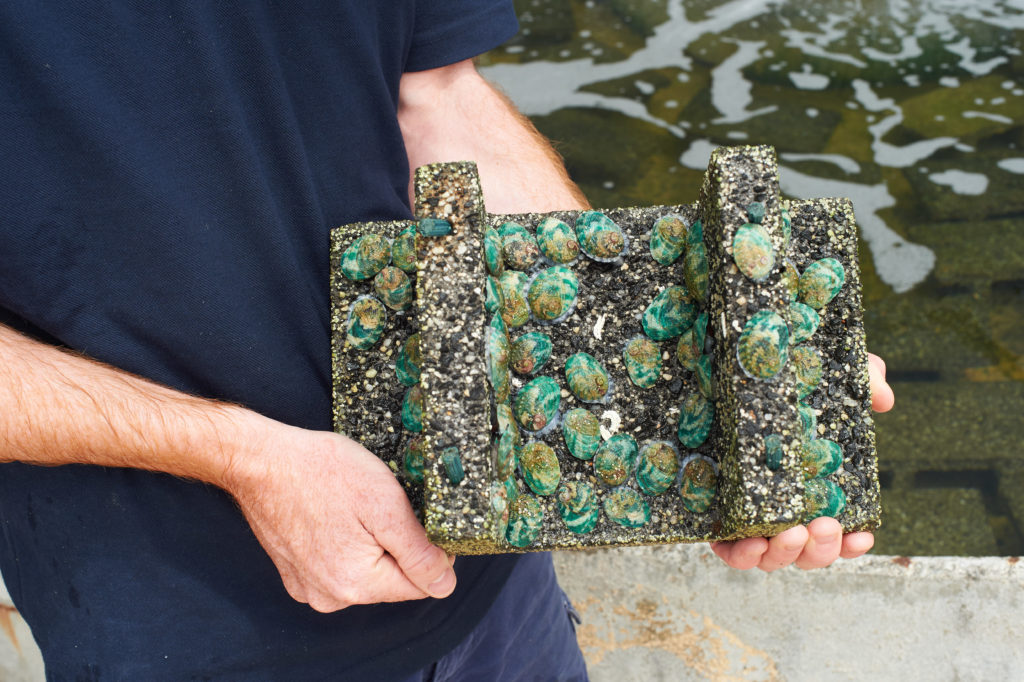
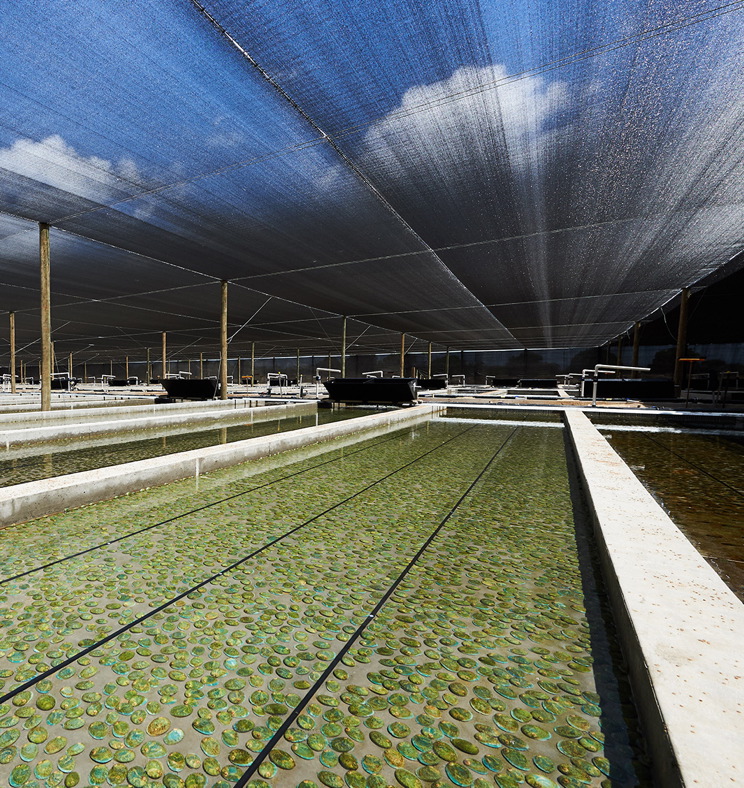
After 6 Months
In the grow-out system, a continuous mix of crashing, rushing and slow-flowing seawater simulate the perfect conditions for abalone. Here, the abalone thrive for the next two to three years, increasing in size from 20mm to 100mm. Grow-out encompasses most of the production area, with more than three-quarters of the growing area dedicated to this part of the production cycle. The system can be efficiently fed and cleaned and all of the tanks are closely monitored. As the abalone grow, ensuring enough space is available is a constant process and abalone are sometimes moved to accommodate the optimum space to grow.
After 2-3 Years
All Yumbah abalone are hand harvested and purged before being processed in a quick and delicate manner. The key to preserving the natural qualities of our farmed abalone is having control of the processing that occurs after harvest. Yumbah uses its onsite brine and nitrogen freezing facilities to fix the abalone in the best condition prior to shipping it to our central processing facility, Yumbah Processing, located in Wingfield, Adelaide.
Here, sophisticated grading and packaging technology is applied to conclude the process creating a perfectly packaged abalone offering, fit the most discerning customers in the world.
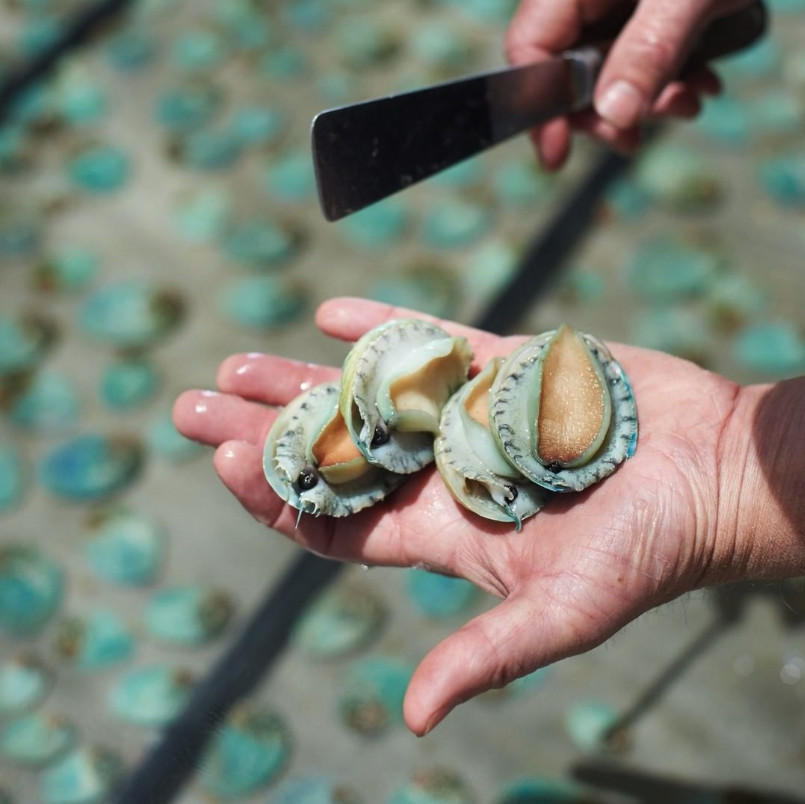
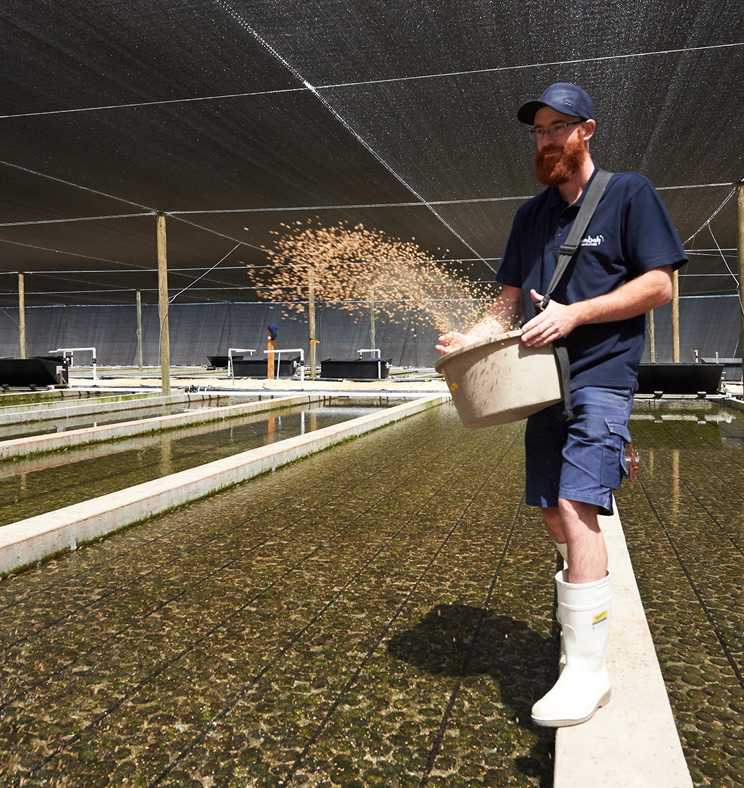
Aquafeeds
On the farm, the larger abalone live on tank algae, ocean nutrients and our exclusive Yumbah Aquafeed which is made like pasta and resembles chips of green fettuccini. As marine snails, abalone are herbivorous and enjoy a largely plant-based feed.
Producing our own feed provides Yumbah with control and traceability, from raw ingredients through to manufacturing and storage. Research and development into nutrition is ongoing, focusing on sustainable ingredients that improve the growth and survival, colour, texture and flavour of our abalone.
Yumbah Aquafeed is free from antibiotics, pesticides, artificial colouring or pigments and growth hormones.
Suspended Animation Freezing®
Suspended Animation Freezing® (SAF) is a unique process developed by Yumbah that retains the freshness and taste of Yumbah abalone, and ensures that once thawed, the product maintains the same high quality as before it was frozen. Yumbah have developed this process over many years using a combination of Australian and Japanese technology.
Before freezing, Yumbah apply a strict selection process to ensure the quality of each abalone.
SAF is extremely fast, preventing the formation of large ice crystals in the product’s cells and prevents the destruction of the membrane structures at the molecular level. The product then maintains, to a far greater extent, its shape, colour, smell and taste after being defrosted.
